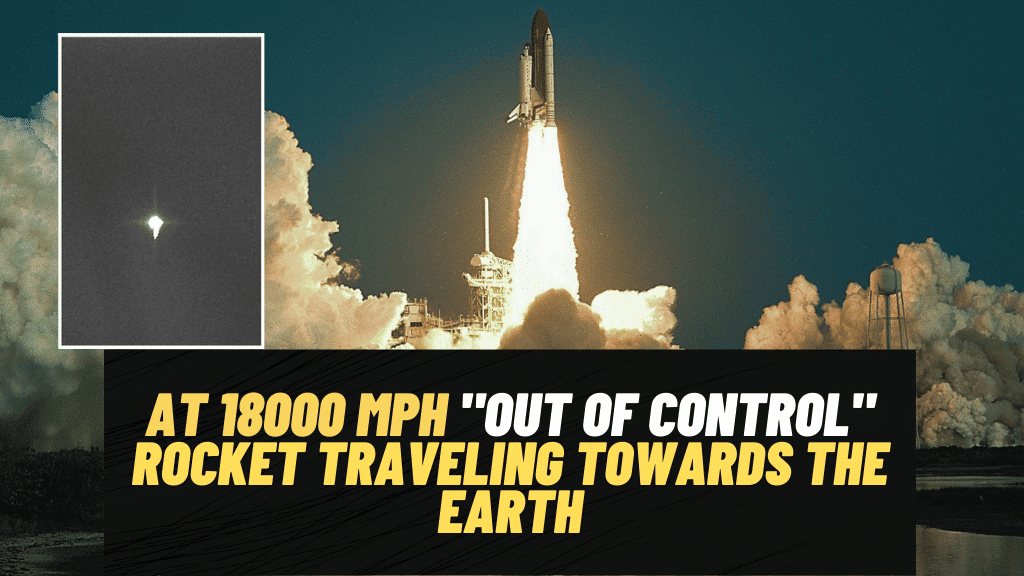Aerospace
At 18000 mph “out of control” rocket traveling towards the earth

At 18000 mph “out of control” rocket traveling towards the earth: No, it’s not the end of the world, however, the odds aren’t zero. After launching a section of China’s new space station last week, a section of the country’s largest rocket, the Long March 5B, is tumbling out of control in orbit. On Saturday or Sunday, the rocket is supposed to crash to Earth in what is known as an “uncontrolled re-entry.”
Why China’s space program let this happen? it is unknown, whether it splashes harmlessly in the ocean or affects the land where people live. Given China’s expected launch schedule, further uncontrolled rocket re-entries are likely in the coming years.
In the last six months, China’s space program has accomplished a number of significant milestones in spaceflight, including returning moon rocks and placing a spacecraft in orbit around Mars. Despite this, it continues to pose a threat to people all over the world by failing to monitor the trajectory of the rockets it launches.
The core booster stage of the Long March 5B, which was intended to lift the massive, heavy parts of the space station, would be falling out of the sky somewhere. The lower stages of most rockets return to Earth almost immediately after launch. After releasing their payloads, upper stages that enter orbit normally fire the engine again, leading them for re-entry in an unpopulated region such as the middle of an ocean.
That could be anywhere between 41.5 degrees north and 41.5 degrees south latitude for the Long March 5B booster. That means Chicago, which is a fraction of a degree north, is secure, major cities like New York could be struck by debris.
The Aerospace Corporation, a nonprofit that conducts research and analysis and is primarily funded by the federal government, predicted re-entry on Saturday at 11:43 p.m. Eastern time on Thursday. If this is right, debris could fall over Sudan and northeastern Africa.
Our latest prediction for CZ-5B rocket body reentry is:
?09 May 2021 03:43 UTC ± 16 hours
Reentry will be along one of the ground tracks shown here. It is still too early to determine a meaningful debris footprint. Follow this page for updates: https://t.co/p2AU9zE3y2 pic.twitter.com/MgzRAOTJnk— The Aerospace Corporation (@AerospaceCorp) May 6, 2021
The time — give or take 16 hours — and position remain highly uncertain. Aerospace had predicted re-entry over the eastern Indian Ocean more than an hour earlier the day before.
At 18,000 miles per hour, the booster moves the debris hundreds or thousands of miles in a matter of minutes. The forecasts become more accurate just a few hours before re-entry.

Aerospace
Boeing Transfers Rocket Stage to NASA, Paving Way for Human Moon Mission

Boeing has achieved a significant milestone by providing NASA with the second core stage of the Space Launch System (SLS) rocket.
This crucial component, crafted at NASA’s Michoud Assembly Facility (MAF), is set to propel the Artemis II crew into lunar orbit, marking humanity’s return to deep space after a 50-year hiatus.
The monumental Boeing-built rocket stage, the largest element of the Artemis II mission, will embark on a journey aboard the Pegasus barge, traveling 900 miles to NASA’s Kennedy Space Center.
Comparison of two legendary aircraft B777x vs B747 aircraft:Click here
Upon arrival, it will be meticulously integrated with other essential Artemis II components, including the upper stage, solid rocket boosters, and NASA’s Orion spacecraft within the iconic Vehicle Assembly Building. This intricate integration process is a vital step toward the eagerly anticipated Artemis II launch, slated for 2025.
“Boeing-built products helped land humankind on the moon in 1969, and we’re proud to continue that legacy through the Artemis generation,” remarked Dave Dutcher, vice president and program manager for Boeing’s SLS program. “Together, with NASA and our industry partners and suppliers, we are building the world’s most capable rocket and paving the way to deep space through America’s rocket factory in New Orleans.”
NASA, Lockheed Martin Reveal X-59 Quiet Supersonic Aircraft:Click here
The delivery of Core Stage 2 marks a significant achievement in the evolution of the SLS rocket. Towering over 200 feet and powered by four RS-25 engines, this core stage, coupled with two solid-fueled booster rockets, will generate a staggering 8.8 million pounds of thrust. This immense power is crucial to launching Artemis II and future missions into the vast expanse of space.
The SLS rocket stands unparalleled in its capability to transport both crew and substantial cargo to the moon and beyond in a single launch. Its extraordinary capacity will facilitate the delivery of human-rated spacecraft, habitats, and scientific missions to destinations including the moon and Mars, ushering in a new era of space exploration.
-

 Travel1 week ago
Travel1 week agoAir India to Expand US Operations with Three New Routes After a Decade
-

 Travel2 weeks ago
Travel2 weeks agoWhy We Should Avoid These Stamps in a Passport
-

 Airlines1 month ago
Airlines1 month agoInvestigations Reveal Fake Chinese Titanium in Boeing and Airbus Jets
-

 Tech4 weeks ago
Tech4 weeks agoChina’s CATL Plans 1,800-Mile Electric Plane Launch by 2027
-

 Airport3 days ago
Airport3 days agoTop 10 Largest Airports in the World by Size
-

 Aerospace4 weeks ago
Aerospace4 weeks agoChina’s Fighter Jets Turn Wings into Autonomous Drones
-

 Airlines4 days ago
Airlines4 days agoAir India Rolls Out A350s for Delhi-New York JFK and Newark Routes
-

 Defence3 weeks ago
Defence3 weeks agoBoeing Enhances Chinook with New Engines and Block II Upgrades at $96 Million







